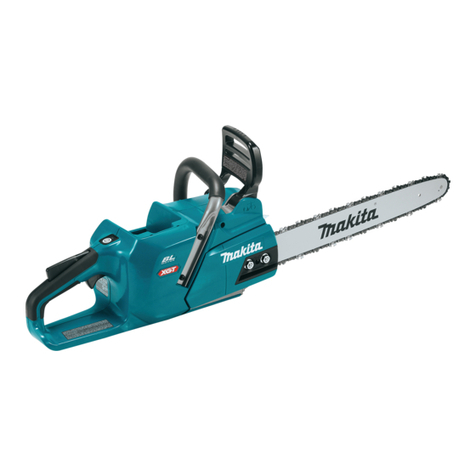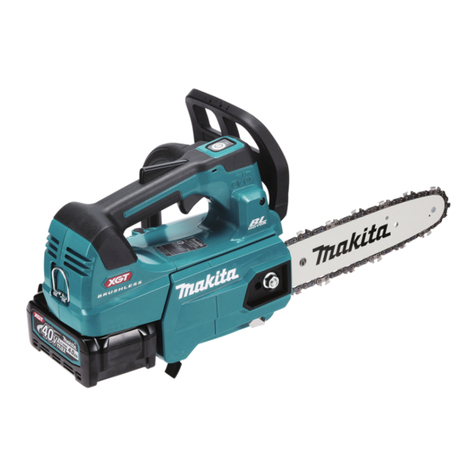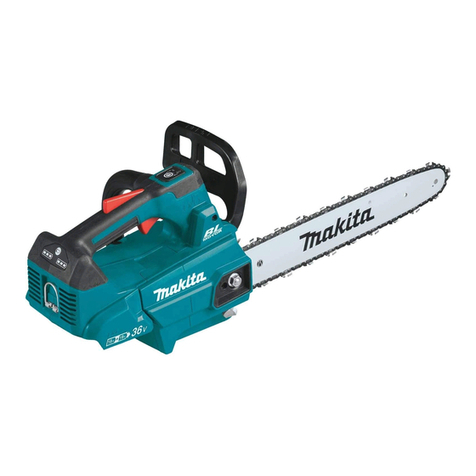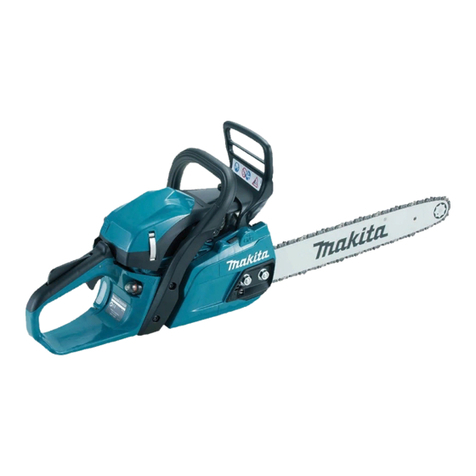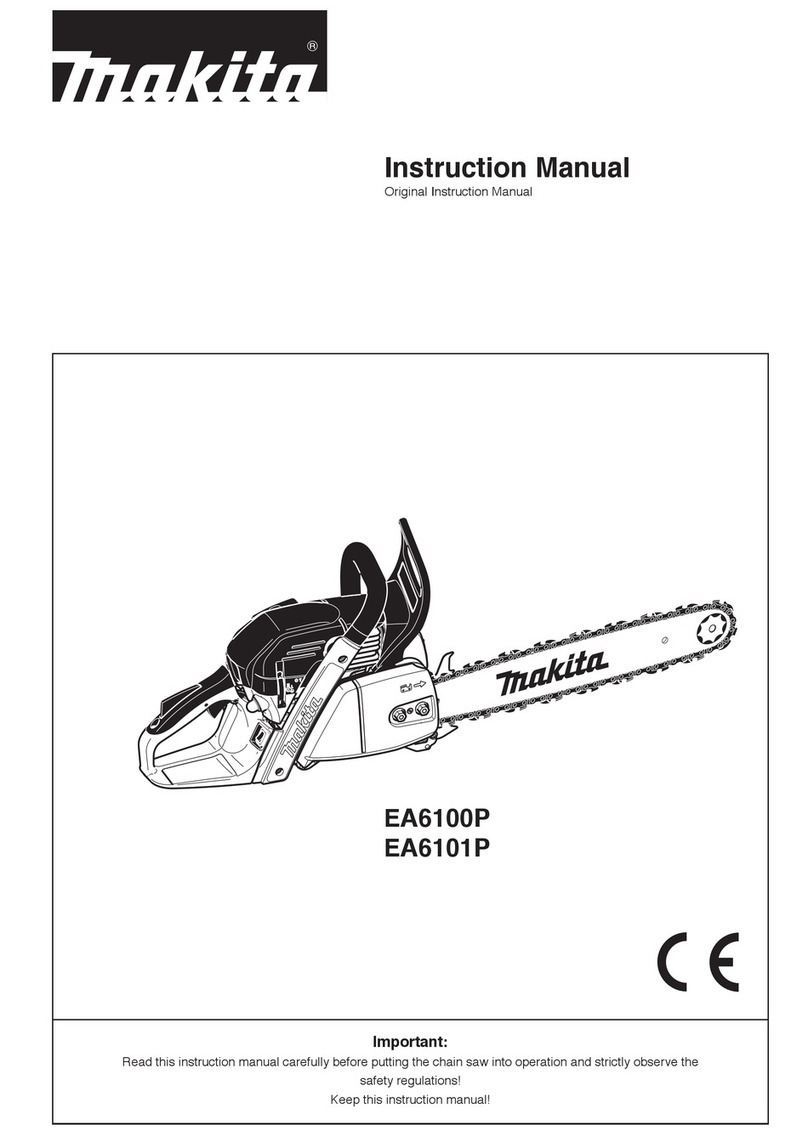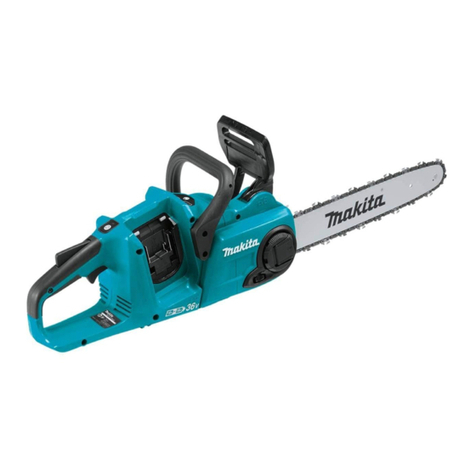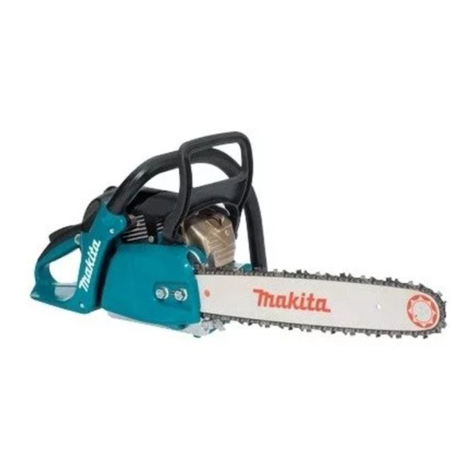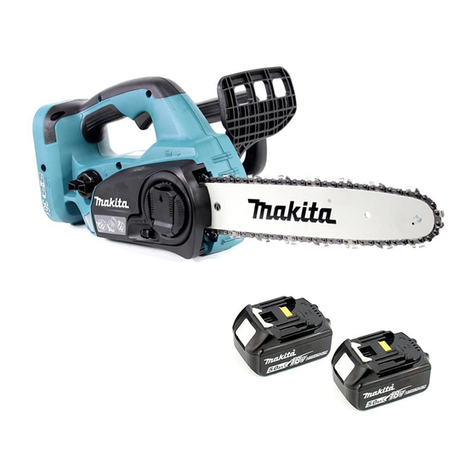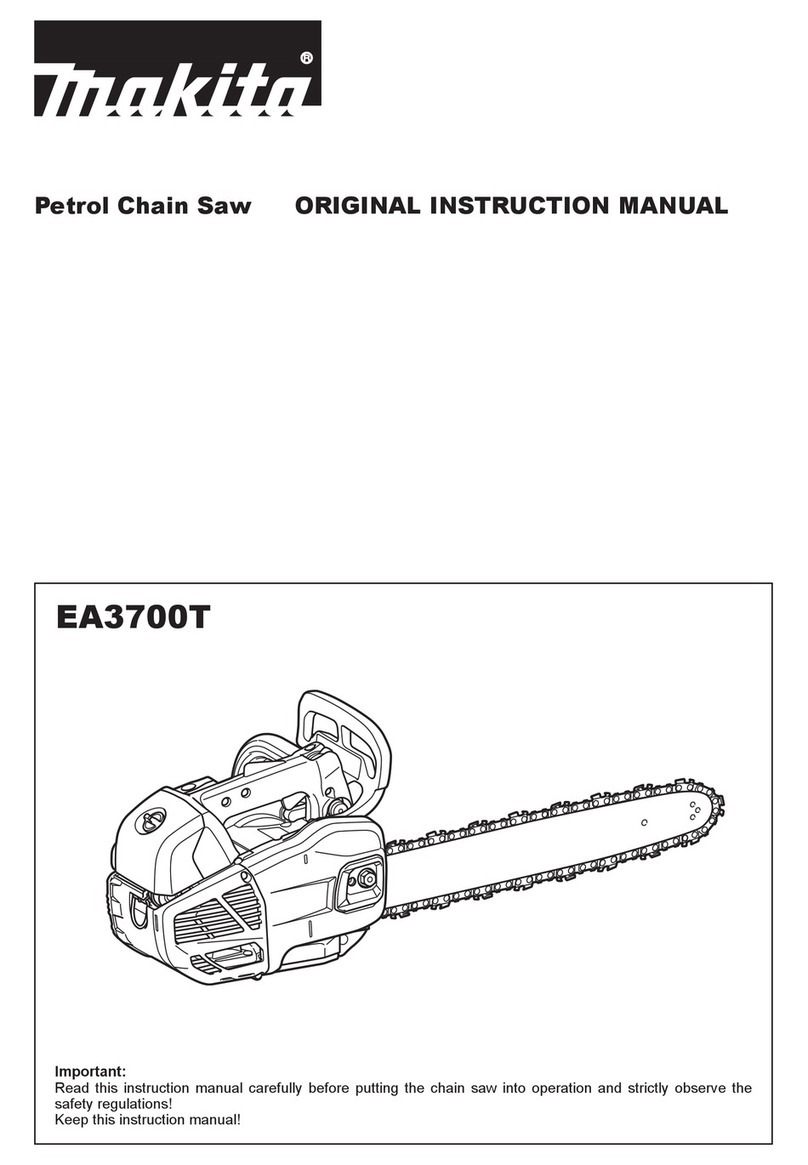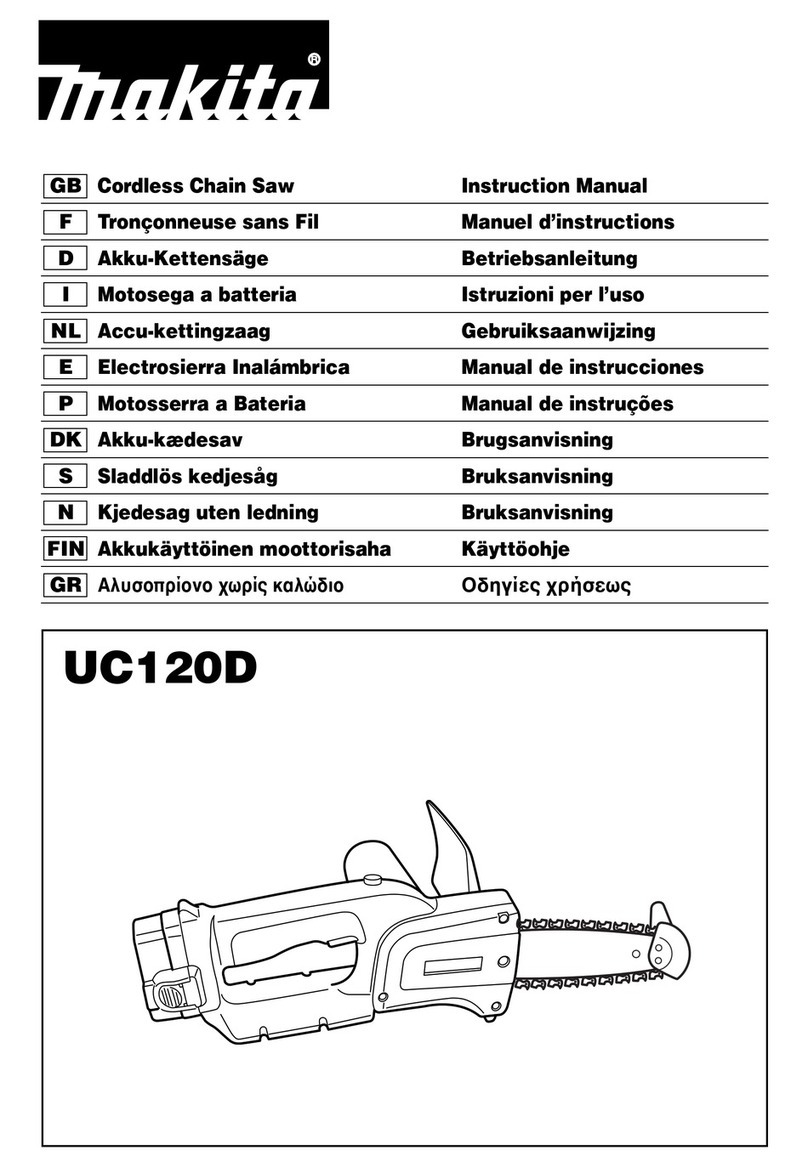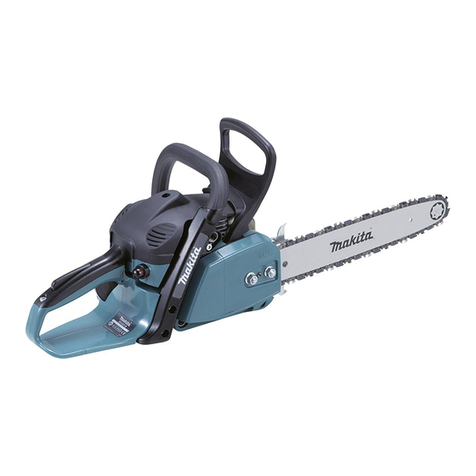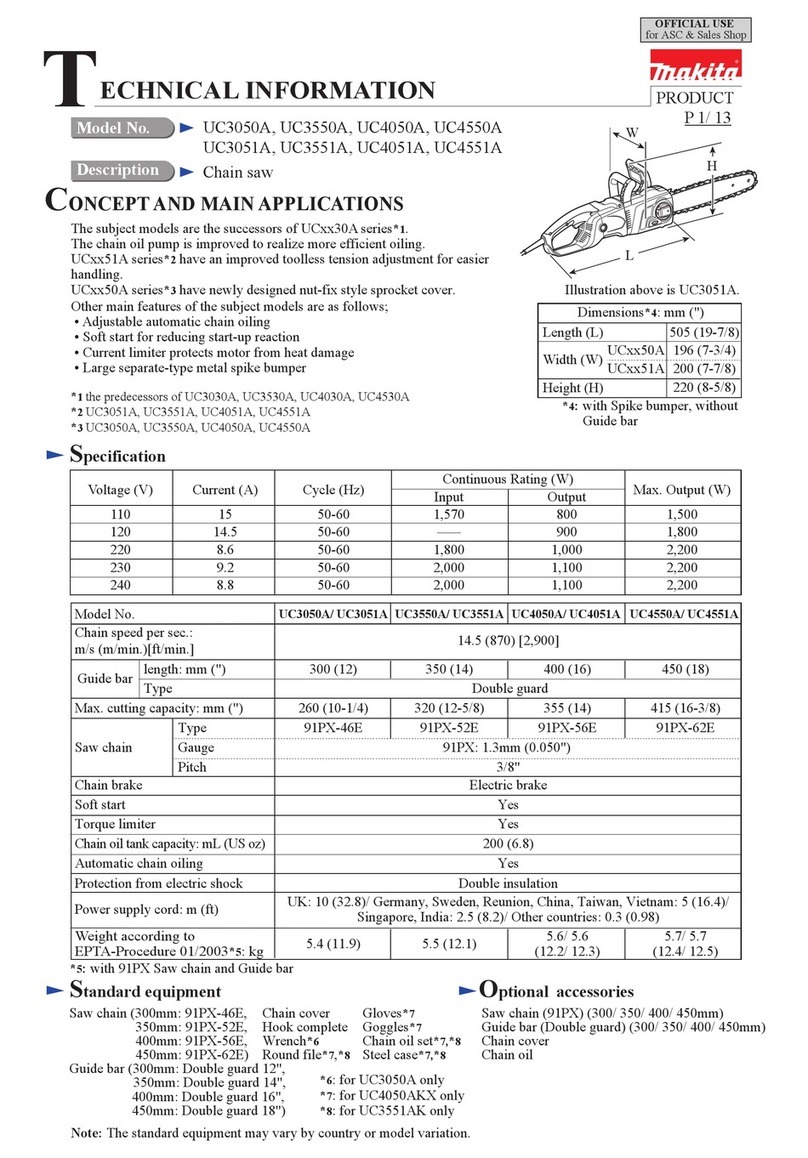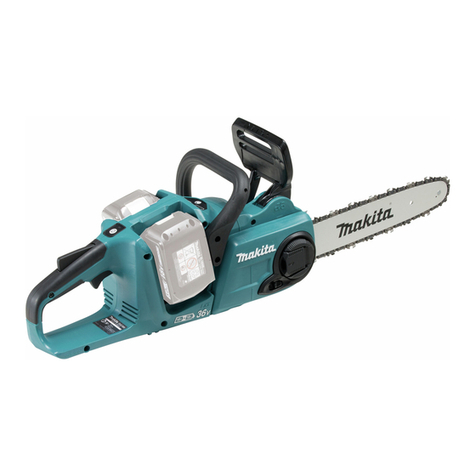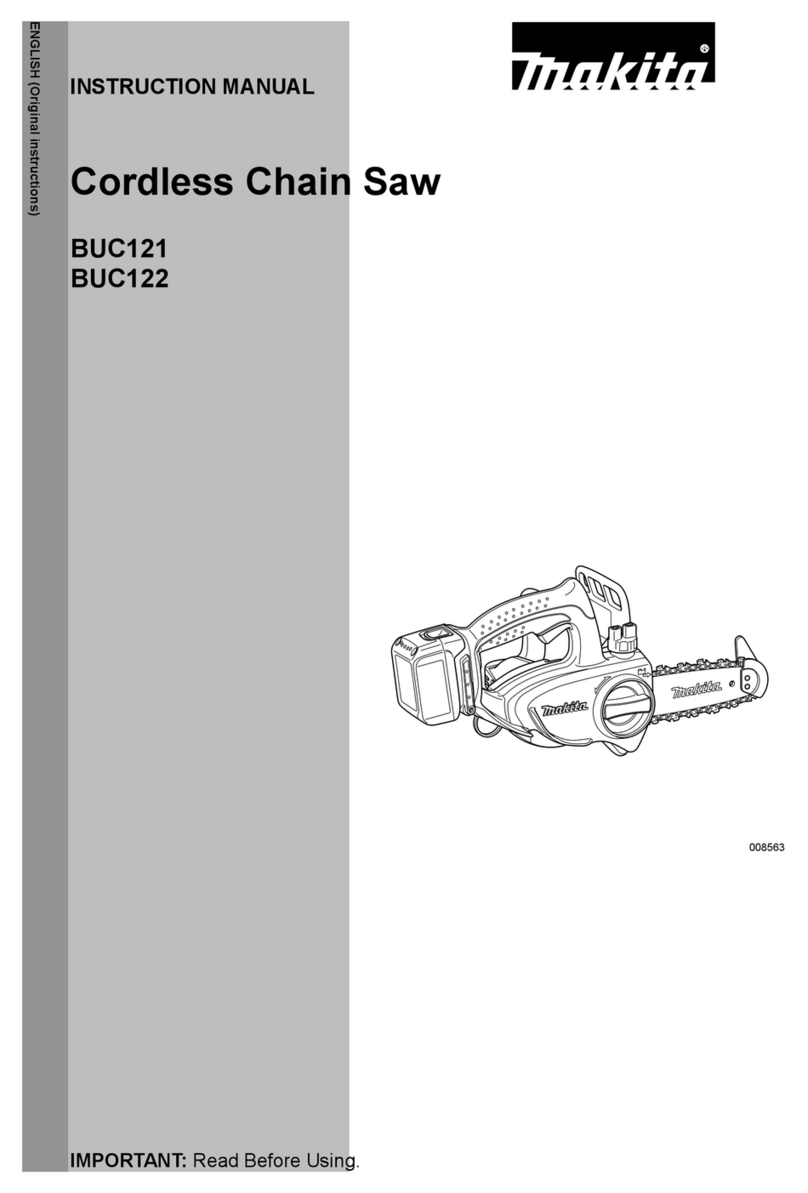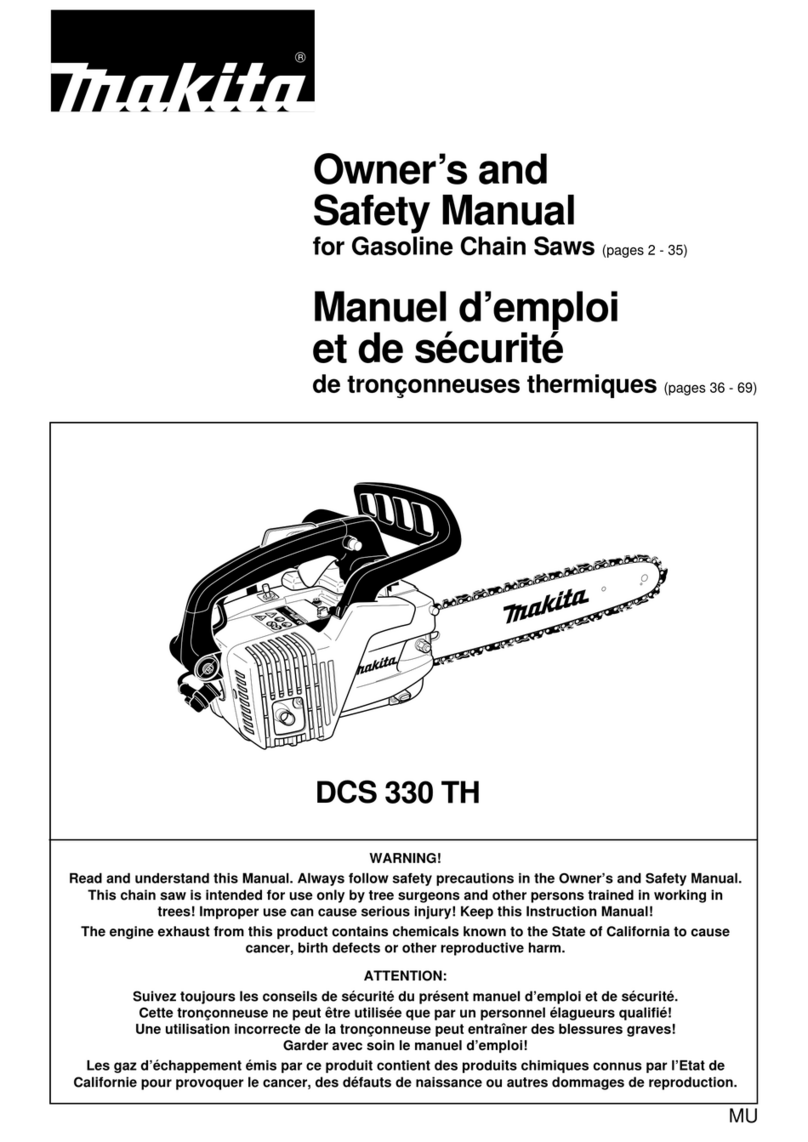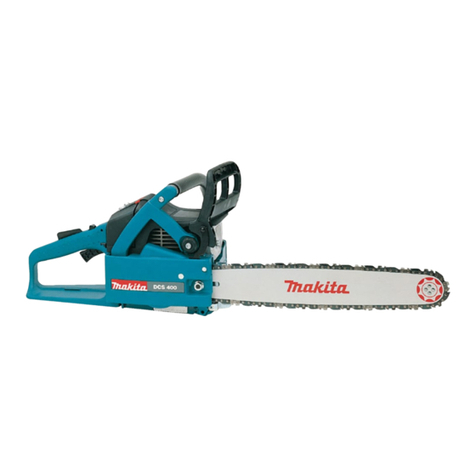
2
Thank you for purchasing a MAKITA product!
Congratulations on choosing a MAKITA chain saw! We are
confident that you will be satisfied with this modern piece of
equipment.
The DCS3410TH (Tophandle) is a very light and handy chain
saw with the handle on the top. This model was developed
especially for tree surgery and care. Only persons who have
completed training in working from elevated platforms (cherry
pickers, lifts), from platforms mounted on ladders or who are
proficient in climbing with ropes are permitted to operate this
chain saw.
The automatic chain lubrication with variable-flow oil pump
and maintenance-free electronic ignition ensure trouble-free
operation, while the hand-saving anti-vibration system and
ergonomic grips and controls make work easier, safer, and
less tiring for the user.
The safety features of the DCS3410TH are state of the art and
meet all German and international safety standards.
They include handguards on both grips, grip safety, chain catch,
safety saw chain, and chain brake. The chain brake can be
actuated manually, and is also inertia-actuated automatically
in case of kickback.
In order to ensure the proper functioning and
performance of your new chain saw, and to
safeguard your own personal safety, it is im-
perative that you read this instruction manual
thoroughly before operation. Be especially ca-
reful to observe all safety precautions!Failure
to observe these precautions can lead to severe
injury or death!
RE Y
Packing
Your MAKITA chain saw will be delivered in a protective card-
board box to prevent transport damage.
Cardboardisabasicrawmaterialandisconsequentlyreuseable
or suitable for recycling (waste paper recycling).
EU Conformity Declaration
The undersigned, Tamiro Kishima and Rainer Bergfeld, as
authorized by DOLMAR GmbH, declare that the MAKITA
machines,
Type: 170 EU prototype test certificate No.
DCS3410TH M6T 09 06 24243 098
manufactured by DOLMAR GmbH, Jenfelder Str. 38, 22045
Hamburg, Germany, conforms to the basic safety and health
requirements of the applicable EU guidelines:
EU Machinery Directive 98/37/ EG, EU EMC Directive 2004/108/
EG, Outdoor Noise Directive 2000/14/EG. Starting on 29 Dec.
2009, Directive 2006/42/EG will come into force, replacing
Directive 98/37/EG. This product meets the requirements of
the new Directive.
The most important standards applied to properly meet the
requirements of the above EU Directive were: EN 14982, EN
ISO 11681-2, EN 61000-4-2, EN 61000-4-3, CISPR 12.
The conformity assessment procedure 2000/14/EG was perfor-
med per Annex V. The measured noise level (Lwa) is 106 dB(A).
The guaranteed noise level (Ld) is 108 dB(A).
The EU Type-Examination Certificate was performed by: TÜV
Product Service GmbH, Zertifizierungsstelle, Ridlerstraße 31,
D-80339 München.
The technical documentation is on file at DOLMAR GmbH,
Abteilung FZ, Jenfelder Strasse 38, 22045 Hamburg,
Germany.
Hamburg, 13.7.2009 for DOLMAR GmbH
Tamiro Kishima Rainer Bergfeld
Managing Director Managing Director
Table of contents Page
EU conformity declaration .................................................2
Packing ................................................................................2
Delivery inventory ..............................................................3
Symbols ..............................................................................3
SAFETY PRECAUTIONS
General precautions .......................................................4
Protective equipment ......................................................5
Fuels / Refuelling ............................................................5
Putting into operation ......................................................5
Kickback .........................................................................6
Working behavior/Method of working ...........................6-7
Transport and storage .....................................................8
Maintenance ...................................................................8
First aid ...........................................................................8
Technical data ..................................................................... 9
Denomination of components ...........................................9
PUTTING INTO OPERATION
Mounting the guide bar and saw chain .................... 10-11
Tightening the saw chain ......................................... 11-12
Chain brake ..................................................................12
Fuels / Refuelling .....................................................13-14
Adjusting the chain lubrication ......................................15
Checking the chain lubrication ......................................15
Starting the engine ........................................................ 16
Cold start ......................................................................16
Warm start ....................................................................16
Stopping the engine ......................................................16
Checking the chain brake .............................................17
Adjusting the carburetor (only for EU-countries)..............17
Adjusting the carburetor (only for not EU-countries) .......18
MAINTENANCE
Sharpening the saw chain .......................................19-20
Cleaning the brake band and sprocket interior .............21
Replacing the chain catch sleeve ..................................21
Cleaning the guide bar, lubricating the sprocket nose ..21
Replacing the saw chain ...............................................22
Replacing the sprocket .................................................22
Replacing the suction head ..........................................22
Cleaning the air filter .....................................................22
Replacing the spark plug ..............................................23
Replacing the starter cable ...........................................23
Replacing the return spring unit ....................................24
Cleaning the muffler ......................................................24
Cleaning the cylinder space .......................................... 24
Instructions for periodic maintenance ...........................25
Service, spare parts and guarantee ...........................25-26
Trouble shooting ..............................................................26
Extract from spare parts list ............................................27
Accessories ................................................................... 27

